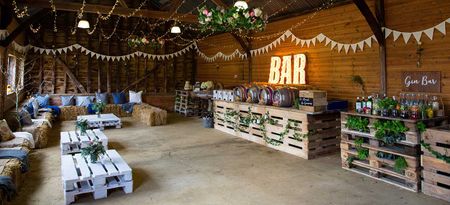Interior design: Period bathroom style
Country bathrooms always look good in a period style: we show you how to do Georgian, Edwardian and Victorian bathrooms
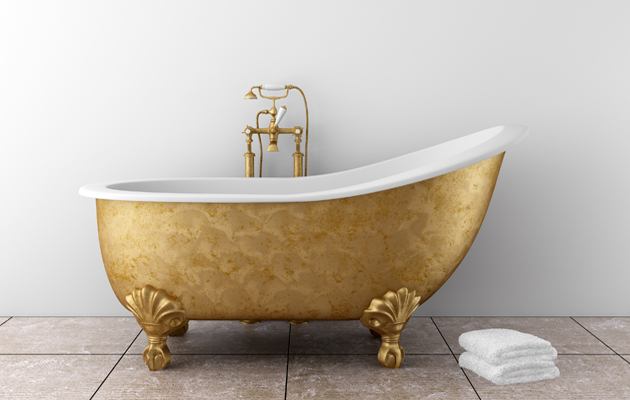
Creating a bathroom that matches your country house’s period can be a daunting prospect—no other room has evolved so much in the past 300 years. Having made a timid appearance in the Georgian era as a corner of the bedroom, the bathroom changed beyond recognition in the 19th and 20th centuries and returning to basin-and-pitcher sets and commodes would be a tall order.
The good news, however, is that, with the right choice of bath, basins, brassware, paints and accessories, you can reproduce the feel of an antique bathroom without sacrificing any of the comforts we take for granted today.
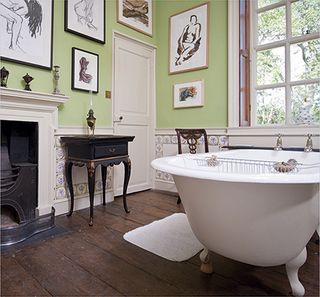
Georgian style
‘The best way to create a Georgian-style bathroom is to use a piece of antique furniture, such as a chest of drawers or a sideboard, and replace the top with marble to create a vanity unit,’ says interior designer Joanna Wood, who also recommends adding antique-style mirrors to set the right tone.
Walls can be covered in wallpaper—Joanna has, on occasion, chosen a Georgian-print Toile de Jouy or painted in shades that are true to period. Later-Georgian schemes used dusky pinks, soft greys, greens and blues and these colours, all in a matte finish, ‘are perfect for the bathroom, because they promote relaxation,’ explains Josephine Rance, marketing director at Farrow & Ball.
Lighting is the final touch and Joanna likes to combine low-voltage downlights with antique wall brackets: ‘Vaughan Designs does very pretty period-style light fittings, which conform to regulations, and Phillips and Wood will refit period lights if needed.’
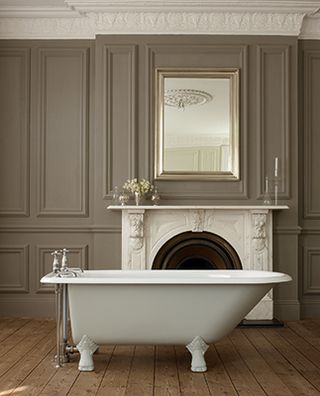
Victorian style
Sign up for the Country Life Newsletter
Exquisite houses, the beauty of Nature, and how to get the most from your life, straight to your inbox.
The bathroom as a dedicated space gained currency in the Victorian era and taking pride of place was a freestanding, cast-iron bathtub, which remains the centrepiece of today’s Victorian-style bathrooms. ‘To re-create the 19th-century look, start with three key elements: an enamelled cast-iron bath, an equally imposing loo preferably with a high-level cistern and white-china basins set within a marble washstand,’ says Drummond Shaw, director at period-bathroom specialist Drummonds. If space allows, you could also install a freestanding shower, such as Drummonds’s The Spittal.
For an authentic-looking scheme, adds Rob Whitaker, creative director at Fired Earth, consider choosing ornate mirrors and patterned encaustic floor tiles.
Brass is the material of choice for taps, which should be large, solid and gleaming. In a truly Victorian bathroom, adds Drummond, ‘these would be just one element of a more highly decorative scheme featuring richly coloured wall and floor tiles, often with geometric designs. If you don’t want to commit to feature tiling, use colour on the walls and bath sides to get a similar feel.’
Farrow & Ball suggests a deep red such as the company’s Eating Room Red or a chic aubergine such as Brinjal to create period glamour in a smaller bathroom. For larger spaces, opt for wallpaper in damask or large floral, bird or animal motifs.
Even the grandest Victorian bathroom would have been short on effective lighting, but, says Drummond, adjustable light sources will allow you to switch from a mellow Victorian atmosphere to a brightly lit space.
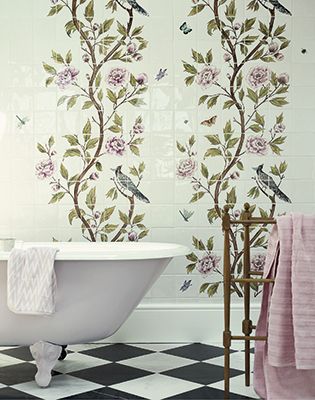
Edwardian style
The late-Victorian era saw the rise of the simpler aesthetic promoted by the Arts-and-Crafts movement, which then came into its own in the Edwardian period. Its hallmarks, says Rob, are timeless natural materials and superb craftsmanship. ‘Look for handmade wooden washstands, tactile stone bowls and hand-decorated tiles featuring floral motifs. Simplicity and attention to detail are key to Arts-and-Crafts style: eye-catching finishes such as polished nickel or a copper bowl with a mellow patina finish are ideal for this look.’
The Edwardian approach to interiors also called for fresh colours, such as pastel blues and cooling greens. ‘Interiors were less formal and the style was seen as a breath of fresh air,’ says Josephine. ‘There was a return to a more pared-down approach to colour. Keeping the walls light and airy gives a refreshing look, which is perfect for relaxing when soaking in the bath.’
Decorative tiles would be a suitable wall covering for a bathroom of this period. Fired Earth has a range inspired by Leslie Green, who was commissioned to design more than 50 Tube stations between 1903 and 1908.
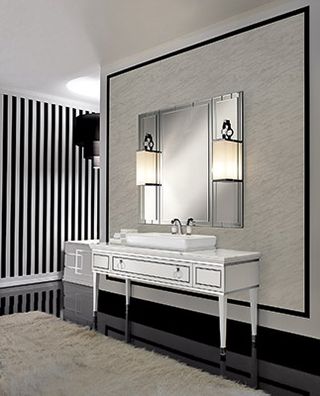
Art Deco
The 1920s and early 1930s were the heyday of the bathroom, when it became the space of choice for Society hostesses to display their taste and opulence (see Country Life, March 23, 2011). Often vaulted and invariably decorated with a profusion of mirrors, marble and even gold mosaic, it was a master-piece of subtle ostentation.
Today, says Rob, ‘a monochrome palette, combined with strong geometric shapes and chrome and glass accents, is instantly evocative of the Art Deco era. A glamorous glass-legged washstand and dramatic metro-style tiling are perfectly in keeping with the look and a large freestanding bath, such as Fired Earth’s Atlantic panelled model, is brimming with Jazz Age style.’
Louise Ashdown, designer at West One Bathrooms, chose a similar approach when she set out to create an Art Deco-inspired bathroom at a country house near Tunbridge Wells in Kent. She picked the boldly geometric Lutetia basin unit by Oasis as the focal point for the room and surrounded it with large polished-porcelain tiles in soft-grey tones to capture the spirit of the Roaring Twenties.
Like tiles, geometrical wallpaper also provides a good alternative to the marble and murals that were common at the time. Josephine suggests Lotus and Block Print Stripe from the Farrow & Ball range, particularly in rooms where there is little natural light.
Glass is a key element of the look—opt for a feature shower door (see Matki for ideas, details as before) or the Empire Wall Light by C. P. Hart (020–3617 0820; www.cphart.co.uk).
Carla must be the only Italian that finds the English weather more congenial than her native country’s sunshine. An antique herself, she became Country Life's Arts & Antiques editor in 2023 having previously covered, as a freelance journalist, heritage, conservation, history and property stories, for which she won a couple of awards.
-
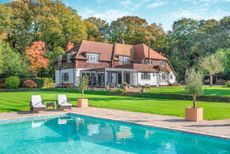 A well-connected rural playground with 23 acres on the edge of the South Downs National Park
A well-connected rural playground with 23 acres on the edge of the South Downs National ParkOld House Farm is an impressive family home with a wealth of amenities that would inspire any rural passion.
By Arabella Youens Published
-
 The UK gets its first ‘European stork village’ — and it's in West Sussex
The UK gets its first ‘European stork village’ — and it's in West SussexAlthough the mortality rate among white storks can be up to 90%, the future looks rosy for breeding pairs in southern England.
By Rosie Paterson Published

